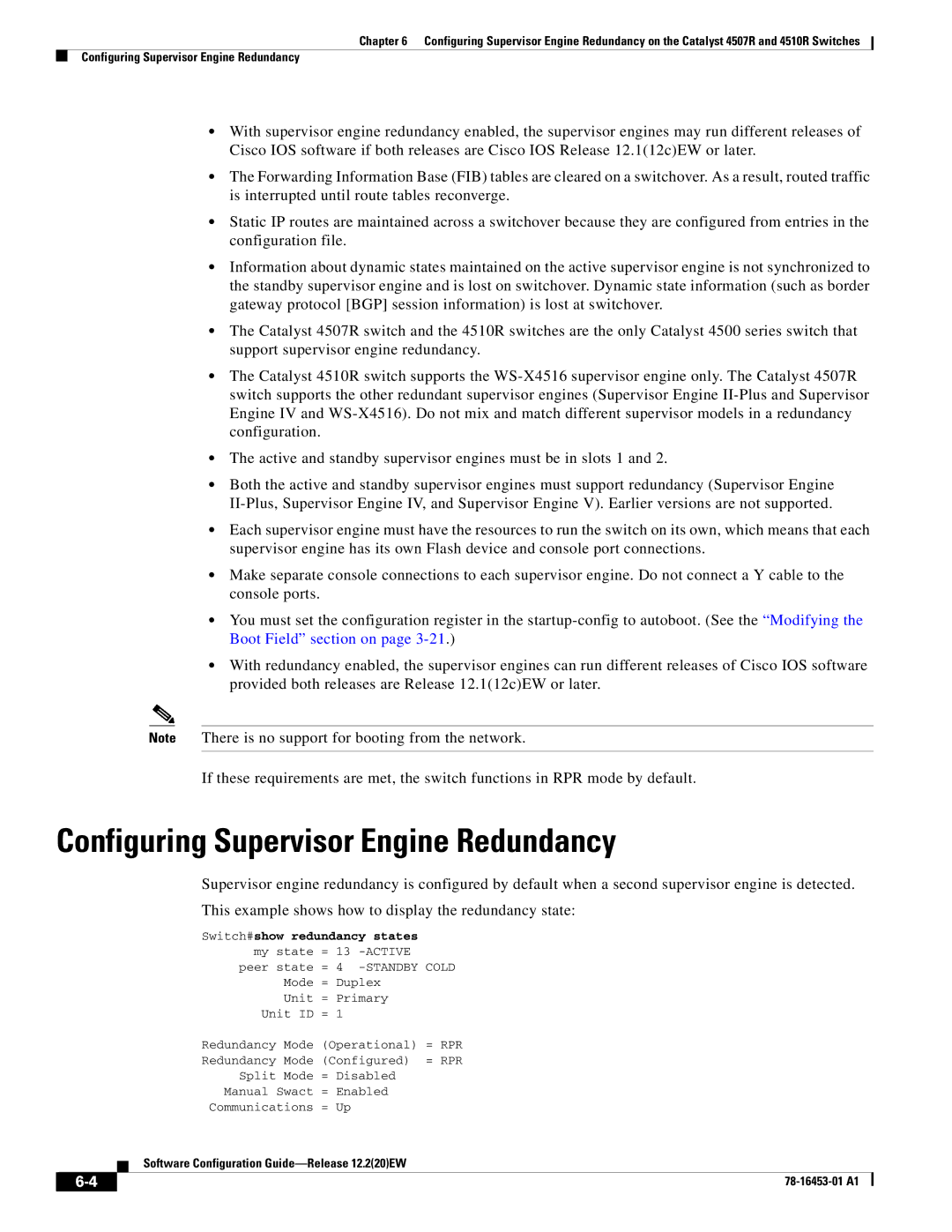
Chapter 6 Configuring Supervisor Engine Redundancy on the Catalyst 4507R and 4510R Switches
Configuring Supervisor Engine Redundancy
•With supervisor engine redundancy enabled, the supervisor engines may run different releases of Cisco IOS software if both releases are Cisco IOS Release 12.1(12c)EW or later.
•The Forwarding Information Base (FIB) tables are cleared on a switchover. As a result, routed traffic is interrupted until route tables reconverge.
•Static IP routes are maintained across a switchover because they are configured from entries in the configuration file.
•Information about dynamic states maintained on the active supervisor engine is not synchronized to the standby supervisor engine and is lost on switchover. Dynamic state information (such as border gateway protocol [BGP] session information) is lost at switchover.
•The Catalyst 4507R switch and the 4510R switches are the only Catalyst 4500 series switch that support supervisor engine redundancy.
•The Catalyst 4510R switch supports the
•The active and standby supervisor engines must be in slots 1 and 2.
•Both the active and standby supervisor engines must support redundancy (Supervisor Engine
•Each supervisor engine must have the resources to run the switch on its own, which means that each supervisor engine has its own Flash device and console port connections.
•Make separate console connections to each supervisor engine. Do not connect a Y cable to the console ports.
•You must set the configuration register in the
•With redundancy enabled, the supervisor engines can run different releases of Cisco IOS software provided both releases are Release 12.1(12c)EW or later.
Note There is no support for booting from the network.
If these requirements are met, the switch functions in RPR mode by default.
Configuring Supervisor Engine Redundancy
Supervisor engine redundancy is configured by default when a second supervisor engine is detected.
This example shows how to display the redundancy state:
Switch#show redundancy states
my state = 13
Mode = Duplex
Unit = Primary Unit ID = 1
Redundancy Mode (Operational) = RPR
Redundancy Mode (Configured) = RPR
Split Mode = Disabled
Manual Swact = Enabled
Communications = Up
| Software Configuration |
